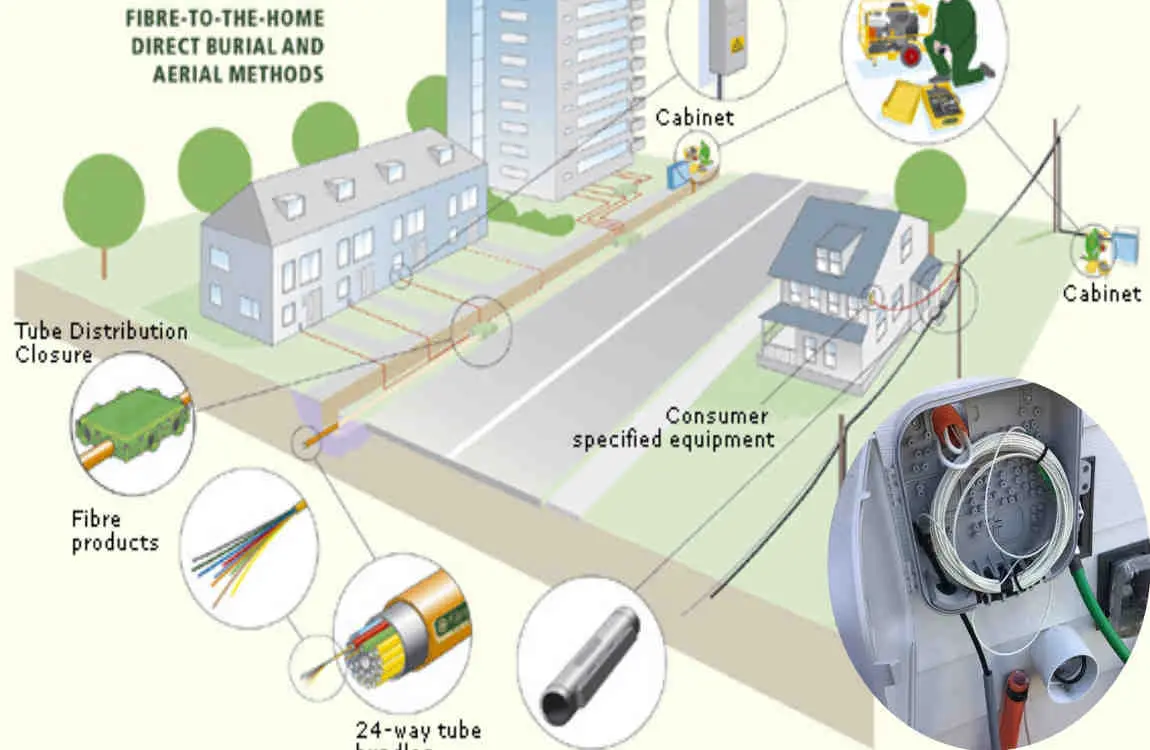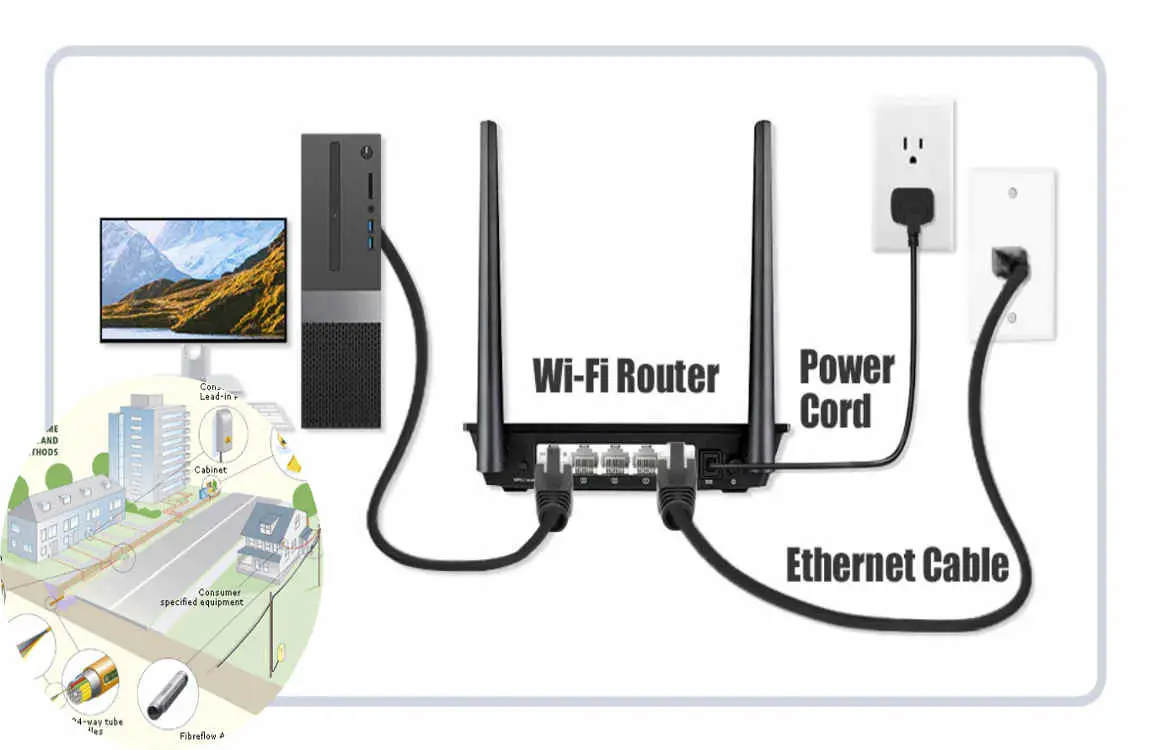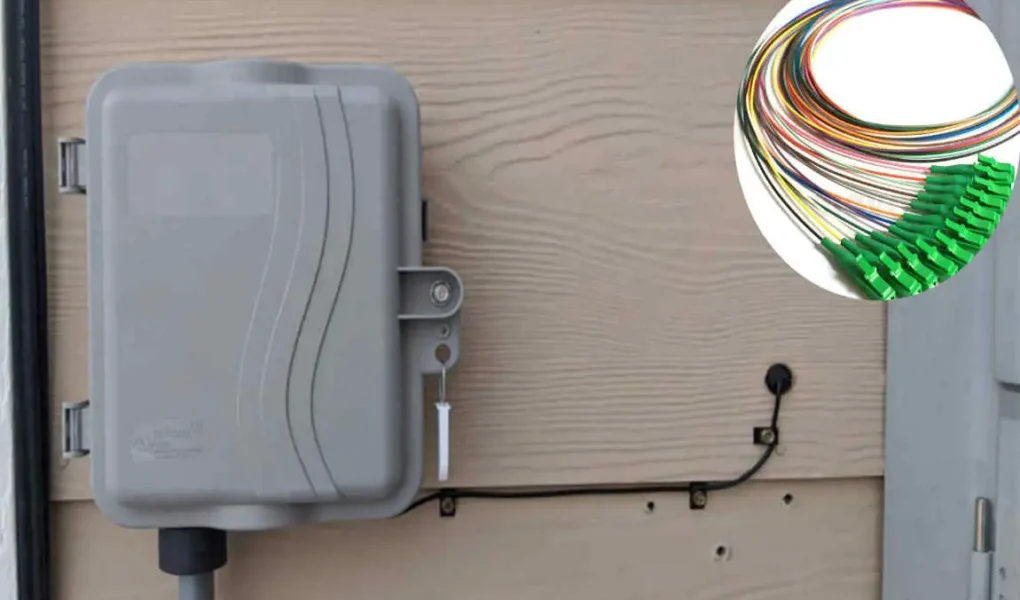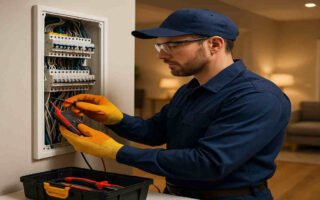Rewiring your home is generally not necessary for fiber optic internet installation. Fiber optic service usually connects to an Optical Network Terminal (ONT) at your home, and from there, the signal can be distributed using your existing wiring, such as coaxial or Ethernet cables. In many cases, the fiber optic cable runs from the street to the ONT, and your current home network setup remains intact without extensive rewiring. However, in older homes with outdated wiring or if you require specialized wired connections in multiple locations, some minor rewiring might be needed to optimize performance. Wireless routers also help avoid the need for extra cables inside the home, making fiber optic upgrades convenient for most homeowners.
Understanding the Current Wiring in Your Home

Before diving into fiber optics, it’s essential to understand your current wiring. Most homes are equipped with copper wiring or coaxial cables, which can handle basic internet speeds.
Copper wires transmit data through electrical signals. While they have served us well over the years, their limitations become apparent as demand for faster internet grows. Slower speeds and lagging connections can frustrate even the most patient users.
Coaxial cables are often used for cable TV and some broadband services. They provide decent performance but fall short when compared to fiber optics’ capabilities.
Inspecting your existing setup may reveal gaps in coverage or outdated technology that doesn’t meet today’s standards. Knowing what you have helps determine if an upgrade is necessary and beneficial in the long run. Understanding this foundation lays the groundwork for assessing whether rewiring is a feasible option for enhancing your home’s connectivity experience.
The Importance of Upgrading to Fiber Optics
Upgrading to fiber optics can dramatically enhance your internet experience. With faster data transfer speeds, you’ll enjoy seamless streaming, gaming, and browsing without interruptions.
Fiber optic cables transmit information using light signals. This method drastically reduces lag time compared to traditional copper wiring. The result? A more efficient connection that keeps up with today’s demands.
Reliability is another significant advantage. Fiber optics is less susceptible to interference from environmental factors like moisture or electrical fields. This durability ensures consistent performance even in adverse conditions.
As smart homes become increasingly common, the need for robust connectivity grows. Fiber optics provides the bandwidth necessary for multiple devices to operate smoothly at once.
You may also read (professional electrician today for your home).
Investing in this technology not only future-proofs your home but also enhances its value on the real estate market. Modern buyers appreciate high-speed internet access as a key feature when searching for properties.
Potential Challenges and Considerations
Rewiring your home for fiber optics is an enticing prospect, but it comes with challenges. One primary consideration is the disruption caused during installation. Opening up walls may lead to dust and mess.
Another factor is compatibility. Your existing devices might not support fiber optic connections right away. This could mean additional costs for new equipment or adapters.
There’s also the question of accessibility. Depending on your home’s layout, routing cables efficiently can become a logistical headache. Not all homes are designed for easy rewiring.
You’ll want to think about long-term needs versus current demands. Fiber optics offers speed today, but will that still be relevant in a few years? Balancing immediate benefits with future-proofing requires careful thought and planning.
Steps to Rewiring Your Home for Fiber Optics
Rewiring your home for fiber optics involves a few essential steps. Start by assessing your current wiring setup. Knowing what you have will help identify necessary changes.
Next, consult with professionals who specialize in fiber optic installations. Their expertise can guide you through the process and ensure everything meets local codes.
Once you’re ready to proceed, plan the layout carefully. Think about where you’ll need connections most—living rooms, offices, or gaming areas might be priority spots.
Prepare your walls by clearing pathways for new cables. This might involve removing drywall or creating access points to hidden areas.
When it’s time to install, follow safety protocols closely. Use protective gear and tools designed specifically for optical fibers.
Test each connection before sealing up any walls again. Ensuring everything works perfectly saves headaches later on.
Cost Comparison with Traditional Wiring

When evaluating the costs of rewiring for fiber optics versus traditional wiring, it’s essential to consider both upfront and long-term expenses.
Traditional copper wiring may initially seem cheaper. However, its limitations often require more frequent repairs and replacements over time. These ongoing costs can add up quickly.
Fiber optic installations tend to be pricier at first glance due to specialized materials and labor. Yet, they offer remarkable speed and bandwidth capabilities that can enhance your internet experience significantly.
Consider potential savings on service fees as well. Fiber optics typically provides faster connections with fewer disruptions, meaning less downtime during critical moments like work calls or streaming sessions.
By investing in fiber optics now, you might save money in the future through reduced maintenance needs and improved reliability. It’s a balance of initial investment against enduring performance benefits that is worth exploring thoroughly.
You may also read (amperage for a typical house).




